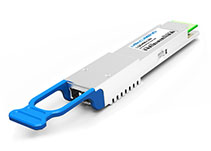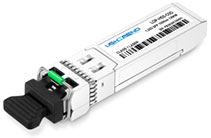Just a few years ago, it was difficult to get a mobile operator to talk about anything other than their Internet of Things (IoT) business. From connected cars to smart cities, connected health to smart utilities, nearly every Tier 1 operator was ready to talk about their IoT ecosystem and their plans for creating products and services for every vertical market.
Fast forward to today and it appears that IoT has taken the backseat to 5G. Mobile operators only want to talk about their 5G network coverage and capabilities. IoT is rarely mentioned in press releases or investor calls.
"IoT isn't sexy and they [operators] have better things to talk about," said analyst Roger Entner of Recon Analytics. "Right now, the market is settled, not matured but settled."
That sentiment was echoed by Matt Hatton, founder of research firm Transforma Insights. "IoT is a slow burn for everybody."
But for AT&T, IoT is still very much a growing business, even if it isn't always in the spotlight. Robert Boyanovsky, vice president of mobility and IoT at AT&T, said that the operator's IoT business is still growing at double digits. As of the end of 2020, Boyanovsky said AT&T had more than 80 million IoT connections.
Low-margin business
One reason some mobile operators may be reluctant to talk about their IoT business is because IoT is still a low-margin business. "You are looking at an ARPU [average revenue per user] of $1 per year," Entner said.
Five years ago, operators were hopeful that IoT margins would be higher and it would be a bigger part of their revenue. "Now they are more connectivity oriented than before, when they thought they would own the whole market with consumers and enterprises," Hatton said.
And instead of trying to be an IoT leader in every vertical market, most operators have decided to focus on just the markets where they are having success. For AT&T, that includes the connected car, where AT&T has 43.5 million cars connected to its network. Two other big areas are asset tracking and professional services, which is where AT&T helps clients stitch together their IoT solutions and create a seamless experience. "Each of these areas has good growth and we have expertise in them," Boyanovsky said.
Competition from the cloud
But growing competition from cloud providers may be a cause of concern to operators. Hatton said that Amazon Web Services (AWS) and Microsoft Azure have become big IoT players with end-to-end IoT platforms. "The expectation is that in five years people will manage their connectivity and devices through Azure and AWS," he said. "That includes the connectivity piece. It is not that big of a step to buy connectivity from AWS."
However, AT&T's Boyanovsky said that the connectivity piece of IoT is important and AT&T is happy to provide connectivity to the cloud providers. "You can't do it alone," he said. "We desire to be the preferred global connectivity provider."
He added that cloud providers have unique capabilities, such as provisioning and security. "If a supplier can simplify this and bring in AT&T for connectivity and they make it easier, it's a win-win."
2G and 3G still leading in IoT
According to Ericsson's November 2020 Mobility Report, massive IoT technologies, which include NB-IoT and CAT-M, are growing around the world. At year-end there were about 200 million NB-IoT and CAT-M connections, and Ericsson predicts they will account for 45% of all cellular IoT connections by 2026. However, the majority of the 1.7 billion cellular IoT connections worldwide are still on 2G and 3G networks.
Of course, in the US market most 2G networks have been shuttered. AT&T discontinued its 2G network in 2017 and has said it will shut down its 3G network in early 2022. Verizon initially said it would shutter its 3G network at the end of 2020 but has since delayed that decision. The shuttering of these 3G networks is concerning to connected car owners who have cars with embedded 3G modules because it will render these services obsolete. However, for operators, continuing to operate their 3G networks is a costly endeavor.
But Hatton said that NB-IoT and CAT-M networks also have costs associated with them, and operators need to perform software upgrades to keep them running at peak performance.
Boyanovsky said that AT&T continues to increase its NB-IoT and LTE-M network coverage as it upgrades its FirstNet first responder network. "When we are updating the sites for Band 14 [for FirstNet] we are also improving our NB-IoT and LTE-M networks," he said.
AT&T first launched its NB-IoT network in April 2019 just a few weeks after T-Mobile launched its NB-IoT network. Verizon followed, launching its NB-IoT network in May 2019. NB-IoT networks typically deliver download speeds of 100 Kbit/s or less and devices operating on the network usually have a battery life of more than ten years.
Both Verizon and AT&T also operate CAT-M networks. LTE-M is also a low-power wide area network and can support data rates of up to 1 Mbit/s. Sprint had a CAT-M network and now that Sprint has merged with T-Mobile it isn't clear whether T-Mobile will continue to operate the network. T-Mobile declined to speak with Light Reading about its IoT plans.




































 Date:2021-04-08
Date:2021-04-08







